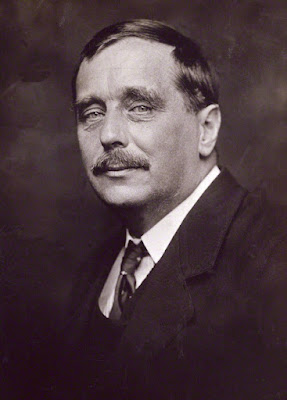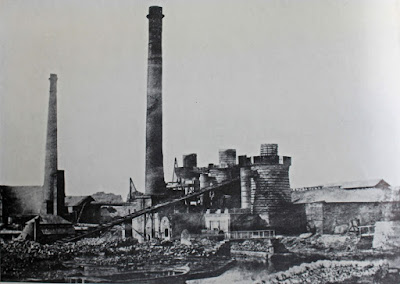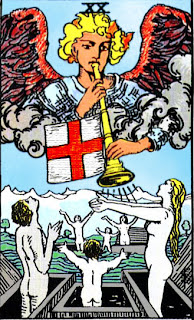Copyright 2018 by Gary L. Pullman
As I mentioned in “H. G. Wells: The Art of 'The Cone,'” Wells is a master of style. He makes every word count toward
the creation of the final effect he designs his stories to create.
Style, as Jonathan Swift defines it, is “proper words in their
proper places.” Mark Twain, like other writers, agrees that “the
difference between the right word and the almost-right word is the
difference between lightning and the lightning bug.” AlfredHitchcock says something similar concerning images, the lexicon of
film. It is not any single image that matters, he says, but the way
in which they are assembled to evoke thought and feeling. On the
importance of style, a science fiction writer, a satirist, a
humorist, and a master of suspense agree, as does any serious writer
or producer. Style is not a small thing; it is everything, for it
shapes and invigorates everything: character, including dialogue,
action, plot, setting, theme.
With a single phrase or
sentence, Wells often accomplishes several narrative or rhetorical
purposes at once in his exemplary short story, “The Cone,” as he
does in his other tales. The story is a true tour de force,
the literary equivalent of expressionistic and surreal paintings,
but, as I discuss this aspect of the story in “H. G. Wells: The Art of 'The Cone,'” there's no
need to repeat it here. Instead, I will concentrate on the effects,
literary and rhetorical, he achieves by several phrases and sentences
in “The Cone.”
At the outset of the
story, his omniscient narrator comments, “They [Mrs Horrocks and
the artist Raut] sat at the open window, trying to fancy the air was
fresher there.” This sentence accomplishes three things:
- It suggests that the air is not “fresher” near the open window, because it is not “fresh” anywhere.
- The fact that they are “trying to fancy” fresh air near the window means that they are not succeeding. The open window admits no fresh air; like their attempt to imagine fresher air, the open window is a mere prop and, therefore, a failure.
- The illicit couple's attempt to “fancy the air was fresher” characterizes them. In the face of a reality they find unpleasant, they imagine their circumstances are different. They seek to impose their own preferences upon the world, adjusting what is to what is suitable to them. In this, the sentence's use of “attempt” suggests, they also fail.
Wells gets much out of
other phrases, too. In the story's fifth paragraph, his narrator
describes an approaching train: “one, two, three, four, five, six,
seven, eight black oblongs—eight trucks—passed” not only shows
the passing of the cars, but also makes readers count
them as they go past: “one, two, three, four, five, six, seven,
eight black oblongs—eight trucks.” The counting helps to make the
paragraph active, but it also reinforces the number of cars in the
train. The ironworks, we think, is a busy, productive place. In the
same sentence, the narrator adds that the cars “were suddenly
extinguished one by one in the throat of the tunnel,” causing
readers to imagine each car being “extinguished” as it enters the
tunnel's “throat.” This description includes one of the many
personifications Wells uses to bring his ironworks to life as an
active, vengeful, and menacing entity.
For
Raut, the ironworks represents “Gehenna,”
meaning “a place of burning, torment, or misery,” or, “(in
Judaism and the New Testament, Hell).” The ironworks is impertinent,
daring to belch “fire and dust into the face of heaven.” Raut's
words suggest that the ironworks is an affront to God Himself, an
impious, wicked hell the very existence of which is an insult to
heaven. “Fire and dust,” the insults, as it were, which the
hellish ironworks belch “into the face of heaven,” are later
juxtaposed to the Biblical phrase “pillars of cloud” and “pillars
of fire” in which God appears to Moses and the Israelites as He
guides them across the desert after their escape from pharaoh: “And
the LORD went before them by day in a pillar of a cloud, to lead them
the way; and by night in a pillar of fire, to give them light; to go
by day and night.” (Exodus 13:21). The substitution of “fire”
for the more eloquent phrase “pillars of fire” and of sullying
“dust” for the more elegant expression “a pillar of a cloud”
degrades the poetic language of the Bible, substituting crass
terminology for its elevated diction. While Raut accuses the
ironworks of insulting God, it is he, through his paraphrases of
scripture, who actually does so.
In two
clever sentences, Wells creates a sort of reverse-personification.
His omniscient narrator describes blast furnaces, which stand “heavy
and threatening, full of an incessant turmoil of flames and seething
molten iron,” as if they are hearts full of passion and rage;
Horrocks himself, as their manager, is the mind, or soul, that
controls these savage breasts. His “seething” passions and the
“incessant turmoil of [the] flames” of his rage are the vengeful
hearts that will burn Raut alive.
Throughout
descriptions of the ironworks, Wells's omniscent narrator uses
phrases suggestive of violence, blood, death, and hell to depict the
ironworks, the scene of Raut's eventual demise: “ghostly stunted
beehive shapes,” “a ringing concussion and a rhythmic series of
impacts,” “fitful flames,” “hammer beat heavily,”
“palpating red stuff,” “blood-red reflections,” “succession
of ghosts,” “blood-red vapour as red and hot as sun,” “white
as death,” “fire writhing in the pit,” “sulphurous vapor,”
“boil the blood,” and “hot suffocating flame.”
References
to Gehenna, “the pit,” “pillars of cloud by day,” “pillars
of fire by night,” “sin,” “sulphorous vapor” and “God”
give the story a Biblical, if not an expressly Christian, context, as
does Horrocks's horror at what he has done when “his sanity
returned to him,” following his apparent crime of passion and he
observes the effect of his vengeance, the sobbing, “inhuman,
monstrous creature” that had been Raut. However, this context is
undercut by Raut's reference to Jove and the omniscient narrator's
allusion to “half-naked Titans.” Not only does the adulterous
behavior of Raut and Mrs. Horrocks and Horrocks's seeking of
vengeance against Raut suggest that religion is, for
them, merely conventional, rather than sincere and devout, but Raut's
use of the expression “by Jove,” like the omniscient narrator's
employment of the phrase “half-naked Titans,” also implies that
none of the characters is religious. Whether Horrocks' own plea to
God at the end of the story is genuine or merely an expression of his
horror at the sight of what he has done is open to question.
Through
his conscious and deliberate selections of words and constructions of
phrases throughout “The Cone,” Wells creates and maintains a
style that is not only appropriate to his tale, but one which
complements it at every turn, creating ironic contradictions;
movement and pace; a religious context; complex characterization
through allusions and personification; a sense of violence, blood,
death, and hell; doubt concerning the characters' true devotion to
the religious faith that is implied by the story's allusions to
religious themes and theological concepts; and, overall, the unity of
effect that produces a seemingly inevitable resolution of the story's
central conflict. Wells' style delivers a great deal, largely thanks
to his deliberate use of language—“proper words in their proper
places”—a and to his own inimitable artistic genius.






































